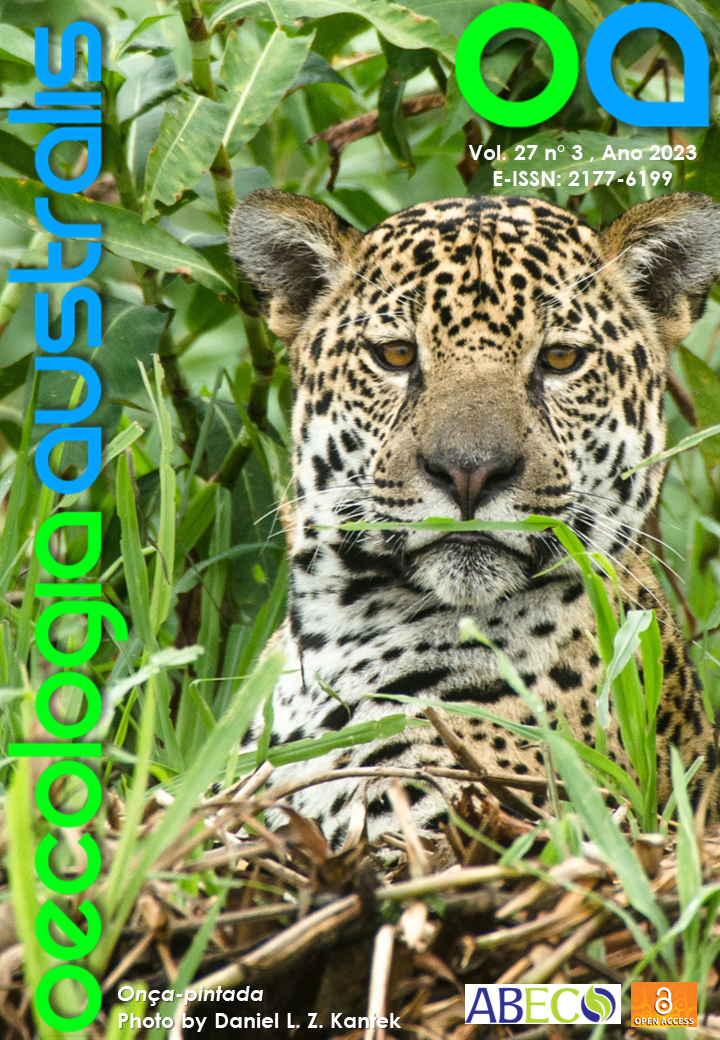IMPLICATIONS OF HABITAT SELECTION BY JAGUARS FOR CONSERVATION ACTIONS IN THE PANTANAL WETLANDS
DOI:
https://doi.org/10.4257/oeco.2023.2703.04Keywords:
habitat selection, Panthera onca, Pantanal, Taiamã Ecological StationAbstract
Understanding the use of habitats by jaguars (Panthera onca) is fundamental to comprehend the ecological role of the species in the environments in which they occur. In Brazil, the Amazon and Pantanal biomes are considered fundamental for the conservation of the species. The Pantanal wetlands are in the centre of South America and the jaguar occupies about 47% of the territory. Poaching and habitat loss are the main threats to the population in this region. The highest densities of P. onca are found mainly in the north-central regions of Pantanal, where is situated the Taiamã Ecological Station (TES), a small federal protected area. The present study aims to elucidate fine-scale jaguar habitat selection in the TES region and check for seasonal differences. Through GPS collar information obtained from 11 animals, an analysis with the integrated step selection function (iSSF) was performed to investigate jaguar habitat selection. Our analysis indicated that these felines often use forested areas close to rivers, in contrast to open areas and away from watercourses. During the wet season, these cats tended to use forested areas more often than in the dry season. These data are important to support actions for the conservation of jaguars in the studied region.


